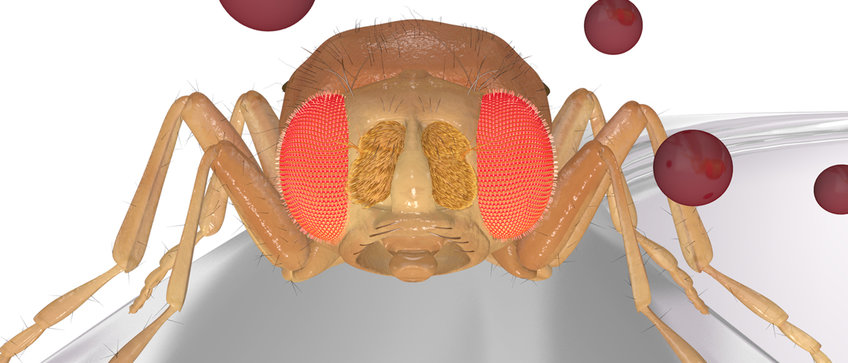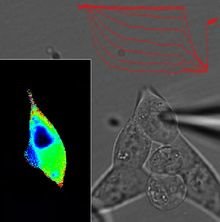
Reception & Transduction
Insect Molecular Neurophysiology of Olfaction

Olfactory receptors play an important role in adaptation of a species to ecological niches. Insect olfactory receptors are different in two aspects from vertebrate and other invertebrate olfactory receptors which belong to the family of G protein coupled receptors (GPCRs). First, they form dimers composed of one odour-specific protein and one ubiquitous protein forming an ion channel. Second, compared with classical GPCRs the topology of the insect receptor proteins appears to be inverted.
We investigate by which mechanism Drosophila olfactory receptors transduce an odorant signal into an electrical signal and how this signal is processed and amplified within the compartments of the olfactory sensory neurons.
Our work is focused to figure out how an adaptation to a special environment is organized at the level of olfactory receptors and on the level of inter-neuronal communication. We thus perform electrophysiological experiments in native cells (in situ and in isolated form) as well as in heterologous expression systems to investigate biophysical properties of olfactory receptors and downstream signalling systems. These approaches are complemented by optical imaging and pharmacological investigations of signalling components.
Editorial Board Membership
Associate Editor of Frontiers in Cellular Neuroscience
Topics for Master Thesis:
1. Odor signal processing in Drosophila olfactory sensory neurons. Pharmacological screening using fluorescence optics in an isolated antenna preparation
2. Role of the Drosophila odorant receptor protein Or57b in odor-induced excitation and inhibition of olfactory sensory neuron activity
3. Regulation of response termination upon odorant stimulation in Drosophila
Methods:
1. Patch clamp (electrophysiological technique to measure ion currents across the plasma membrane of cells or membrane patches)
2. Fluorescence optics (to determine the intracellular concentration of messengers such as calcium and cAMP, based on fluorescent indicators for these compounds)
3. Cell culture (heterologous expression of channel and receptor protein in cultured cells such as HEK293 or CHO cells)
Preparations:
Drosophila open antenna preparation (in vivo and in vitro)
Isolated Drosophila olfactory sensory neurons
Heterologous expression systems (HEK293, CHO, Sf9)
Cooperations/grants
DFG SPP 1392 Integrative Analysis of Olfaction
Project "Analysis of olfactory transduction mechanisms in the behaving hawkmoth Manduca sexta" (Wi 1422/3-2)
Cooperation with Monika Stengl (Universität Kassel, FB 10 Naturwissenschaften, Abt. Tierphysiologie)
